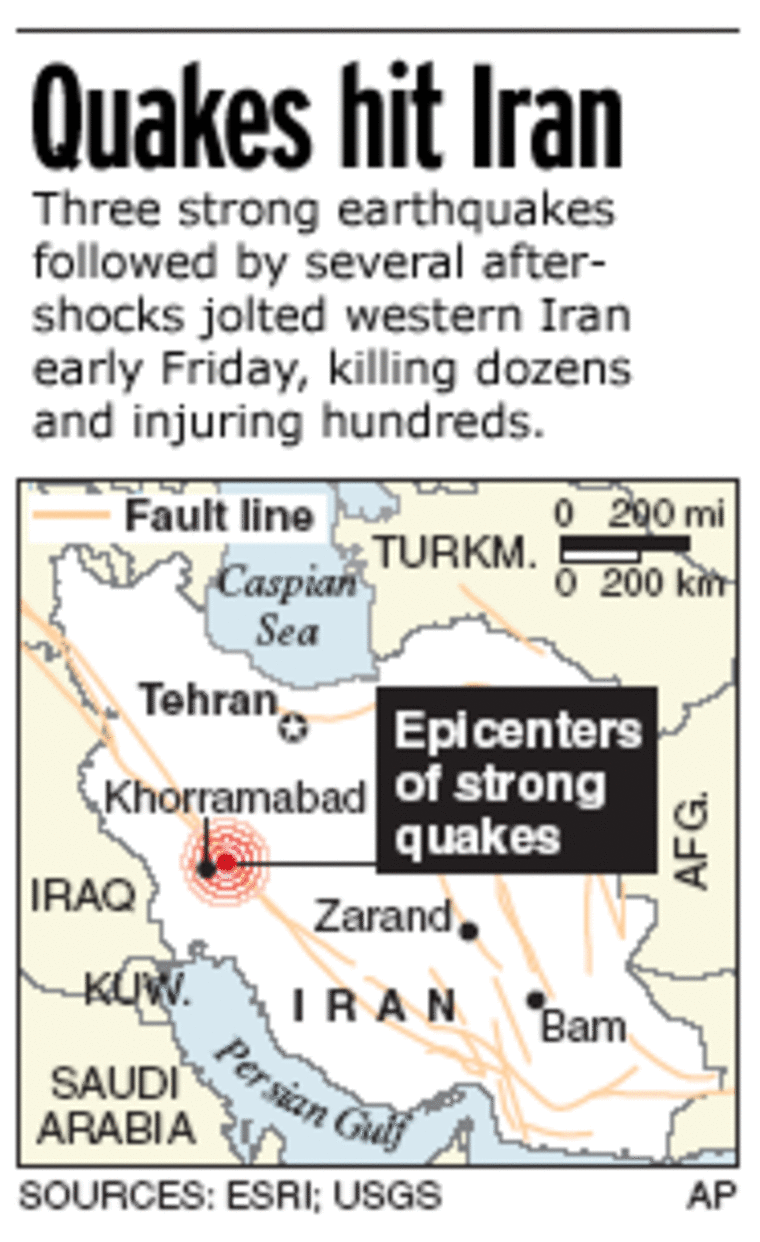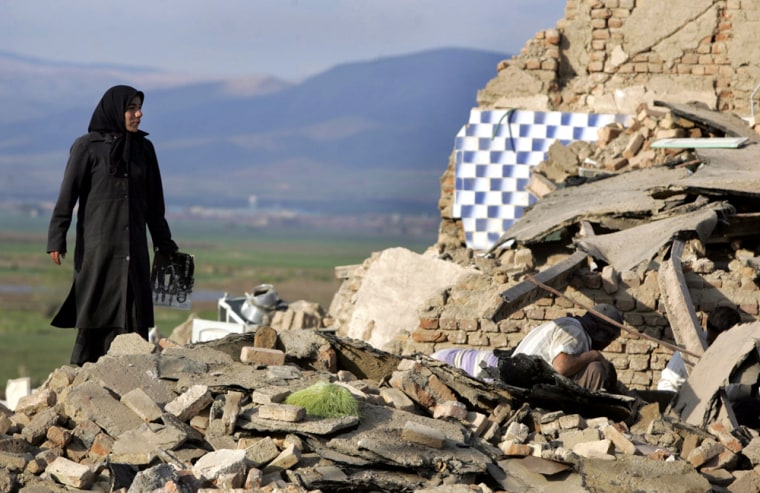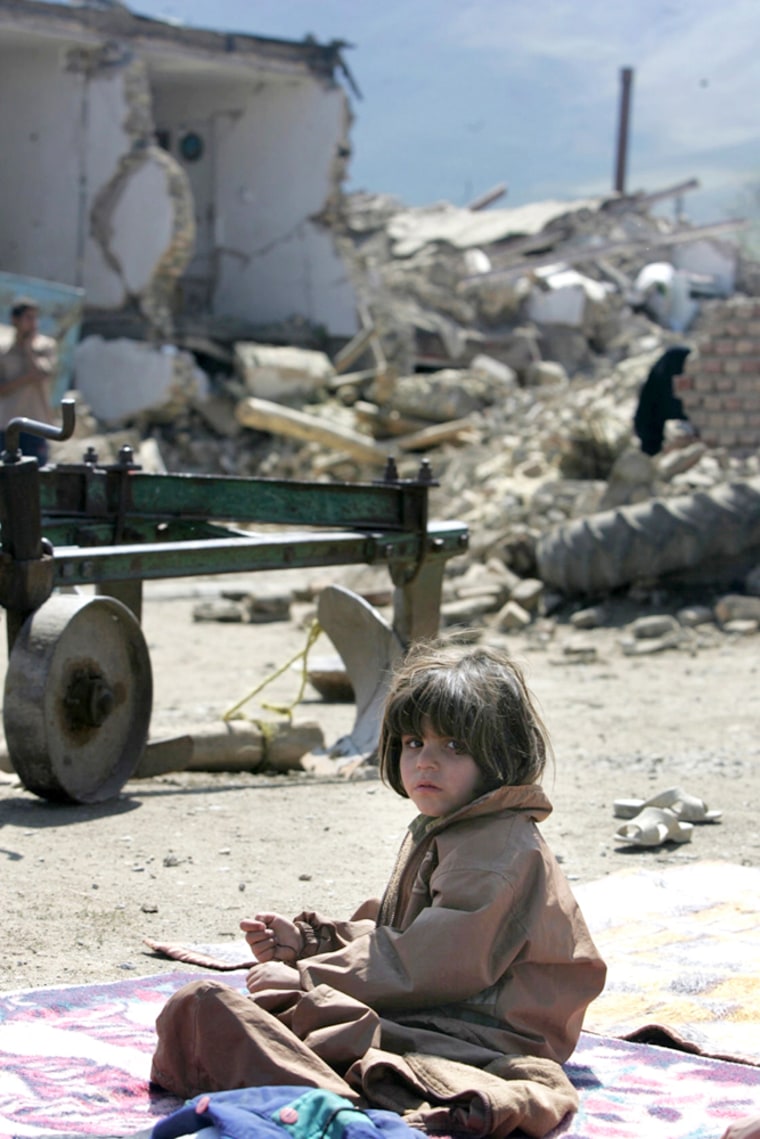Italy and Russia sent planeloads of tents, blankets and other supplies Saturday to help 21,000 Iranian families left homeless by three strong earthquakes that hit in quick succession, killing 70 people.
But Iran’s government remained silent on whether it would accept an American offer of aid amid heightened tensions between the two nations over Iran’s nuclear program.
Iranian authorities were rushing temporary shelter to thousands of victims in towns and villages in western Iran, where residents were sleeping outside in the chilly spring night, fearful of returning even to homes that survived the quakes late Thursday and Friday.
Some 21,000 families were homeless in 330 villages that were damaged or flatted by the quakes, said the provincial head of the Unexpected Disaster Committee, Ali Barani, as quoted by the state news agency IRNA.
Limited calls for aid
But Iranian authorities signaled that they only needed limited outside help — in contrast to a more devastating 2003 earthquake that hit the southeastern city of Bam, killing 26,000 people. After that disaster, Iran accepted considerable international aid, including from the United States.
Interior Ministry spokesman Mojtaba Mirabdollahi told The Associated Press late Saturday that “all the survivors have received adequate protection and operations providing temporary accommodation is now over.”
The quake did not destroy roads, making it easier for officials to quickly get aid to the damaged communities near the quakes’ epicenters, 210 miles southwest of Tehran, Mirabdollahi said.

The immediate challenge now for the authorities was to continue providing sufficient food and drinking water to the survivors.
Still, Iran appeared to have accepted help from its close ally, Russia, and Italy.
An Illushin-76 Russian plane carrying 4,000 blankets, 100 large tents and a number of electric heaters — a total of 29 tons of equipment — left Russia for Iran, though Moscow scrapped plans to send rescuers and medical workers after Tehran said they were not needed, the official Islamic Republic News Agency reported.
Italy also sent a plane carrying food, blankets and other humanitarian aid Saturday, IRNA said.
But Mirabdollahi and other officials would not comment on the American offer, and there was no official announcement by the Iranian government whether the U.S. aid had been rejected or accepted.
Washington reaches out to Tehran
President Bush made the offer on Friday, which included temporary housing for 100,000 people, blankets, plastic sheeting, water and $150,000 in cash assistance. Undersecretary of State Nicholas Burns telephoned Iran’s ambassador to the United Nations, who promised a reply after conferring with his government, the State Department said.
The gesture came despite increasing animosity between Washington and Tehran. The United States has led the fight at the U.N. Security Council to bring sanctions against Iran over its nuclear program, saying Tehran intends to develop nuclear weapons. Iran says it only aims to generate electricity.
With its lack of response, Iran appeared to be keeping Washington at arms length, even after its hard-line clerical leadership agreed to hold direct talks with the U.S. over the conflict in neighboring Iraq.
The planned talks angered some Iranian hard-liners, who said it looked like a surrender to the Americans, until Iran’s supreme leader Ayatollah Ali Khamenei silenced critics by voicing approval of the meetings.

‘We slept without fear’
In the earthquake-hit zone around Boroujerd and Doroud, two industrial cities in western Iran, residents began moving into temporary shelter provided by the government. In the village of Kalegh Ali, mourners buried the dead, while survivors dug through the ruins of their homes.
Many in the region spent Friday night outdoors, huddled around fires or sleeping in cars.
“It was a cold night but we slept without fear of being buried under the rubble,” Doroud resident Mahmoud Chaharmiri told AP by telephone Saturday. “Local officials are saying new quakes are not ruled out.”
Series of temblors
The first quake hit Thursday night, with a magnitude of 4.7. Police in Boroujerd and Doroud toured the streets with loudspeakers urging people to leave their homes. Within hours two more quakes shook the region with magnitudes of 5.1 and 6.1, along with at least a dozen aftershocks. The warnings are thought to have contributed to a lower death toll than is usual in Iran for quakes of this magnitude.
Rescue workers pulled the bodies of 70 dead and around 1,200 survivors from the rubble of houses in the region.
“Rescue operations are over. The death toll will not increase nor will the figure for the injured,” provincial governor Mohammad Reza Mohseni told state-run television Saturday.
Iran is located on seismic fault lines and is prone to earthquakes. It experiences at least one slight earthquake everyday on average.
